How a Small Bakery Achieved 95% Forecast Accuracy with Predictive Analytics
In 2025, a modest bakery faced an everyday challenge: managing inventory. Predicting customer demand had always been guesswork, leading to waste and occasional lost sales. But by adopting predictive analytics, they automated 70% of their inventory management, achieving a remarkable 95% accuracy in forecasting demand. Suddenly, managing stock became predictable, efficient, and profitable (NetSuite).
This isn’t a rare case reserved for tech giants. Today, predictive analytics is increasingly affordable and user-friendly, making it a powerful tool even for small and medium-sized businesses (SMBs). Here’s how SMBs can harness the power of predictive analytics to forecast smarter and act faster in 2025.
Why SMBs Need Predictive Analytics Now
Predictive analytics uses historical data, statistical algorithms, and AI to predict future outcomes, such as sales trends, inventory requirements, or cash-flow cycles. What once required dedicated data teams now can be easily managed through intuitive platforms accessible to SMBs.
SMBs that adopt predictive analytics:
- Achieve more accurate sales and demand forecasts.
- Optimize inventory and supply-chain operations.
- Reduce waste and operational costs.
- Enhance customer targeting and personalized marketing efforts.
With SMB-friendly predictive analytics platforms now widely available, this is the perfect moment to integrate these capabilities into your workflow (Investopedia).
Effective Predictive Analytics Tools for SMBs in 2025
Several tools have emerged as particularly beneficial for SMBs due to their ease of use, affordability, and seamless integration with existing systems. Here’s a shortlist of the top platforms:
| Tool | Why Great for SMBs |
|---|---|
| Microsoft Power BI | Easy integration with Excel, affordable pricing, built-in predictive modeling. |
| Tableau | Strong visualizations, easy to interpret predictive insights, cloud-based solutions. |
| Zoho Analytics | AI assistant “Zia” for forecasts, integrates well with CRM and ERP systems. |
| Google Vertex AI | Pre-trained AutoML models, no-code required, pay-as-you-go pricing. |
| IBM Watson Studio Lite | Step-by-step guidance, automated AI, free lite tier for small-scale use. |
| RapidMiner | Drag-and-drop workflow, pre-built predictive templates, community edition free. |
| Sigma | Spreadsheet-style analytics intuitive for finance teams and Excel users. |
| Amazon SageMaker Canvas | No-code predictive modeling, pay-as-you-go model, integrates well with cloud data. |
Start by exploring free tiers or community editions to identify what fits your SMB’s unique needs best.
Real-World Success Stories of SMB Predictive Analytics
DoorDash’s Real-Time AI Advantage
DoorDash leverages predictive analytics to forecast demand and optimize delivery routes. Their AI system integrates traffic, weather, and historical order data, significantly reducing delivery times and improving customer satisfaction (DigitalDefynd).
Danone’s Reduced Lost Sales
Danone implemented AI-powered forecasting, cutting lost sales by 30%. By accurately predicting consumer demand, Danone optimizes inventory and reduces waste across their product lines (VKTR.com).
Ulta Beauty’s Personalized Recommendations
Ulta Beauty uses predictive analytics for customer targeting, dramatically boosting customer loyalty through personalized product recommendations based on browsing history and purchase data (BizTech Magazine).
Common Challenges SMBs Face (and How to Overcome Them)
Despite clear benefits, SMBs still face hurdles in adopting predictive analytics:
- Limited Budgets: Choose cloud-based tools with flexible pricing or free tiers (e.g., Google Vertex AI, IBM Watson Studio Lite).
- Poor Data Quality & Integration: Standardize and centralize data collection using user-friendly integration tools like Fivetran or Talend (Netstock).
- Lack of Expertise & Clear Goals: Start small, define specific goals (e.g., improving inventory accuracy), and train your team on basic analytics literacy (Data Mantis).
- Security & Privacy Concerns: Leverage cloud providers known for robust security measures (AWS, Azure) and maintain compliance with GDPR or similar standards.
- Resistance to Adoption: Demonstrate tangible results early, such as increased sales accuracy or reduced inventory costs, to secure team buy-in.
3 First Steps to Apply Predictive Analytics This Quarter
Ready to take action? Here’s a simple three-step roadmap to quickly implement predictive analytics in your SMB:
Step 1: Identify a Specific Business Goal
Choose a practical, measurable objective (e.g., inventory reduction, cash-flow forecasting, or customer retention).
Step 2: Pick an Accessible Tool and Start a Pilot
Select an easy-to-use predictive analytics platform from the list above (Power BI or Tableau are excellent starting points). Begin with a limited project like forecasting next month’s demand.
Step 3: Review, Learn, Expand
After initial testing, review the outcomes. Share successes internally, refine your models based on insights, and scale up gradually.
What’s Next?
Have you experimented with predictive analytics in your SMB?
Facing specific challenges or found unique strategies to overcome them?
At Infinite Stair LLC, we’re passionate about empowering SMBs with data-driven decisions. Whether you’re just getting started or already seeing results, we’d love to hear your story.
Let’s harness predictive analytics to build smarter businesses, together.




